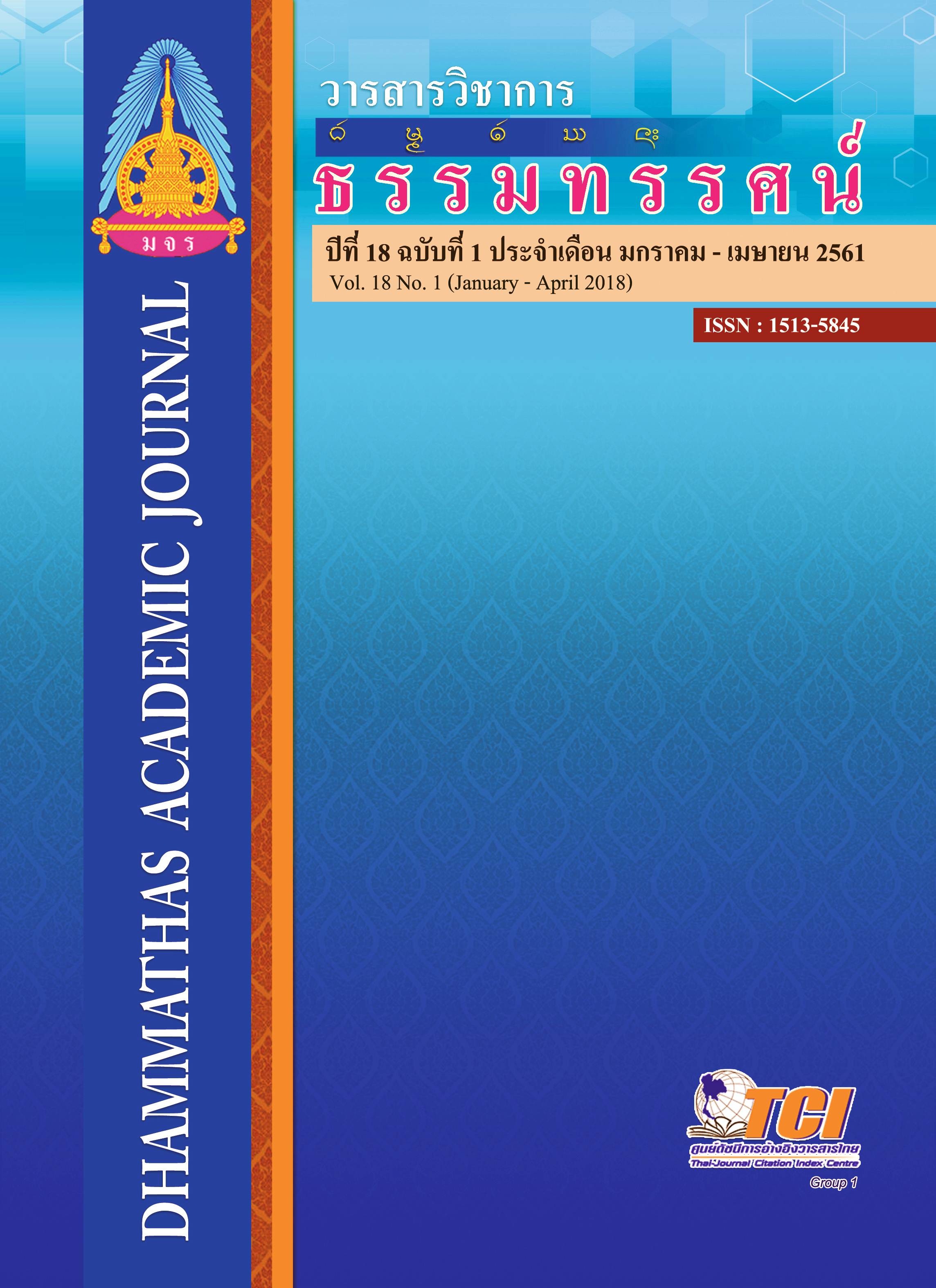An Evaluation for Master of Arts Program in Educational Administration (Revised Edition B.E. 2555) Mahachulalongkornrajavidyalaya University KhonKaen Campus
Main Article Content
Abstract
The purposes of the study were to evaluate and to study methods to develop and improve Master of Arts Program in Educational Administration, Revised Edition The purposes of the study were to evaluate and to study methods to develop and improve Master of Arts Program in Educational Administration, Revised Edition B.E. 2555, Mahachulalongkornrajavidyalaya University Khonkaen Campus. The evaluation format used in this study was CIPP Model. The samples were five administrators, five lecturers, thirty-two senior students, fourteen employers and the informants were five experts. The research tools used were an evaluation form of curriculum consistency for experts and four evaluation forms for administrators, lecturers, students, graduates and employers. The statistics used to analyze data were Percentage, Average, and Standard Deviation and to analyze qualitative data were feedback codification and descriptive analysis.
The research results were as follows:
1. In terms of context, it was found that the curriculum objectives, in overview, were in a high level that Index of Item-Objective Congruence (IOC) was level 4 (0.80); in considering each item, it revealed that curriculum was found to be related to determination and vision of the university with level 5, the highest score, of IOC (1.00). For inferior levels, they were respectively found that the curriculum objectives were proper to content and subject structure which was also related to the faculty objectives with level 4 of IOC (0.80); the curriculum content was up to date that was consistent to national requirements to benefit when comparing to any other domestic and international universities with level 3 of IOC (0.60). For the import factor, it was found, in overview, curriculum structure, subjects, lecturer qualifications, students’ readiness, and supportive learning materials were all in a high level. For the process, it indicated in overview that the process of curriculum administration, learning and teaching management, and assessment were in a high level. And for the production, it was found in overview that learning outcomes of students were in a high level in line with the standard of Thai Qualifications Framework for Higher Education, TQF:HEd, and held the graduate identity that was “Being Faithful and Devotional in Buddhism”.
2. The methods to develop and improve the curriculum were as follows: In terms of context, curriculum objectives should be emphasized on producing qualified graduates in line with philosophy and vision, and on developing the administers and educational leaders in professional ability in order to bear the direction and alteration in the near future in national, region, and international level. For the import factor, curriculum contents should specify the capacity of the credits in line with the national and international standard, develop internet system and information technology to be as students’ needs as well as the scholarship and internship. For the process, the cooperation of committees was needed with the curriculum administration that was to manage the assistance for students including academic terms and thesis works in national and international conference publishing variously as the standard and vocational career, and to support lecturers the academic positions. And for the production, graduate students should be enhanced to be capable of working academically for society in terms of various dimensions: academic, vocational, moral, and acceptable to the employers.

